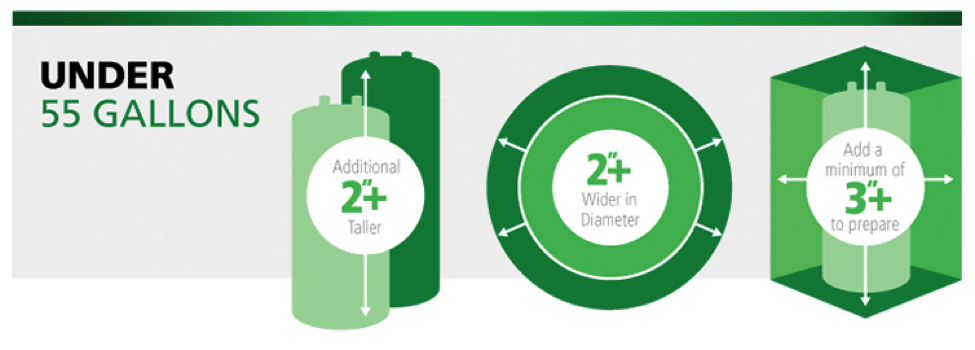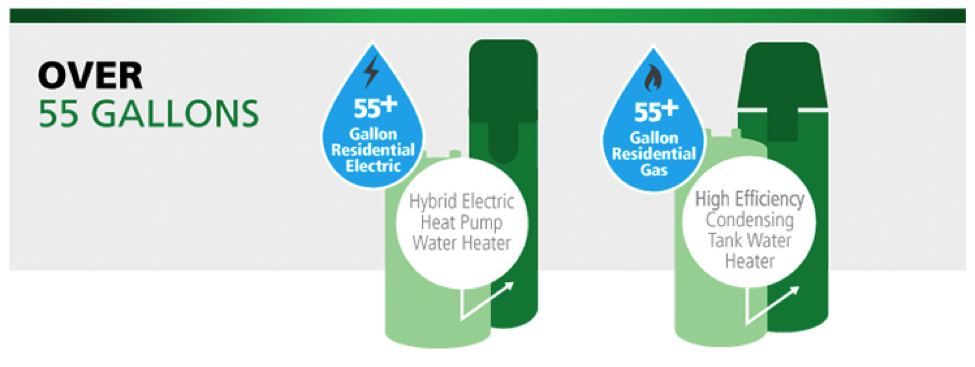In 2010, the US Department of Energy (DOE) revised some of the regulations in the National Appliance Energy Conservation Act (NAECA).
One major reason for changes was to improve the standards for energy efficiency as it relates to water heaters and other manufactured products. In April of 2015, those revisions took effect and will continue to be the water heater regulations guideline for all manufacturers going forward.
Current Water Heater Regulations
As of 2019, these changes are still in effect. Most homeowners have had time to adapt to the changes, though there are still a number of outdated water heaters around.
The average lifespan of a water heater is about 10-15 years, so a number of homeowners likely haven’t needed to upgrade their units just yet.
While these changes were a big deal at the time, the DOE had actually been beefing up efforts to improve energy efficiency since 1990.
According to the DOE, the regulations enacted in 1990 will “result in approximately $34.8 billion in energy bill savings. [A later update from 2004 will] result in approximately $70.6 billion in energy bill savings [and the most recent updates will] result in approximately $63 billion in energy bill savings [and ] will avoid about 172.5 million metric tons of carbon dioxide emissions.”
What Do Water Heater Regulations Mean For You?
According to AO Smith, water heaters built after the change would be larger. The new regulation requires manufacturers to produce water heaters with new size requirements in order to achieve optimal efficiency. Units with the same capacity are larger in size than their predecessors and therefore need more space in your home to install.
This means if you have a water heater over four years old as of this year, you’ll probably need to account for a larger unit when it comes time to upgrade. If you’re keeping your water heater in an enclosed space, installing a new one may involve some remodeling on top of your other costs.
Specific Changes For Water Heater Sizes
If you have an outdated water heater, the specifics you’ll need to keep in mind will depend on the water heater’s capacity.
Units below 55 gallons
For units under 55 gallons, you’ll need three extra inches all the way around to install the new unit. The unit, itself, will be two inches taller and two inches wider in diameter.
So, if your current water heater is in a tight space, like a closet or alcove, you will want to consider the space before upgrading. If your unit is in a garage or basement, it will probably be okay (but you should still make sure!).
Units above 55 gallons
Units over 55 gallons will see the most significant changes. Updating a water heater this size will likely require a lot more space and possibly switching over to a whole new model altogether (some older models have been discontinued).
For residential water heaters, electric models must have hybrid electric heat pumps, and gas models must be the condensing water design.
Saving on costs
If you live in Charlottesville, you may be eligible for a $200 rebate on a new tankless water heater. This rebate should help offset the increased costs of installing a new water heater, such as remodeling or covering pricier models.
Download this offer from the City of Charlottesville Public Utilities for complete details.
Other Ways Water Heater Regulations Might Impact You
- If you were considering a new unit before, but updating didn’t make sense, you may want to reconsider because the efficiency of new models may make it worth the change.
- Know that distributors and retailers can still sell models with old standards. It’s important to check whether or not the model you’re buying was made under the old standards or new, and what will be best for your home.
- The changes had an additional effect of increasing the overall costs of water heater installations, in some cases as much as 30%. New units are more expensive than they were before, so the estimate you got for your previous unit probably won’t apply here.
Additional Water Heater Regulations
In addition to the federal regulation changes described, there are other changes that have taken place.
One change rolled out in 2017 mandated that manufacturers label their products and literature with new standardized efficiency metrics. These metrics, called the Uniform Energy Factor (UEF) metric, is designed to show how efficient each new unit is that’s introduced on the market.
The advantage of this regulation is that it allows you to see what a new water heater’s efficiency rating would be and make educated guesses based on numbers from uniform tests.



